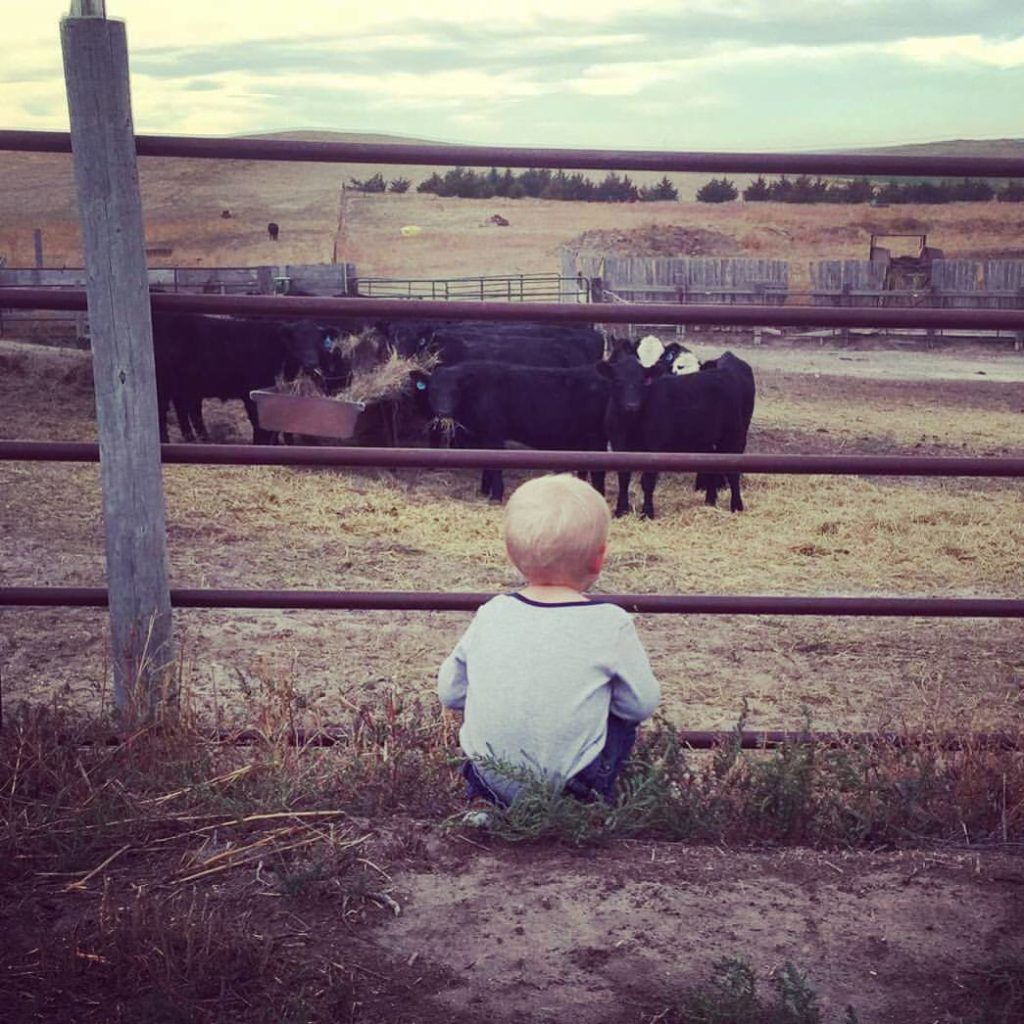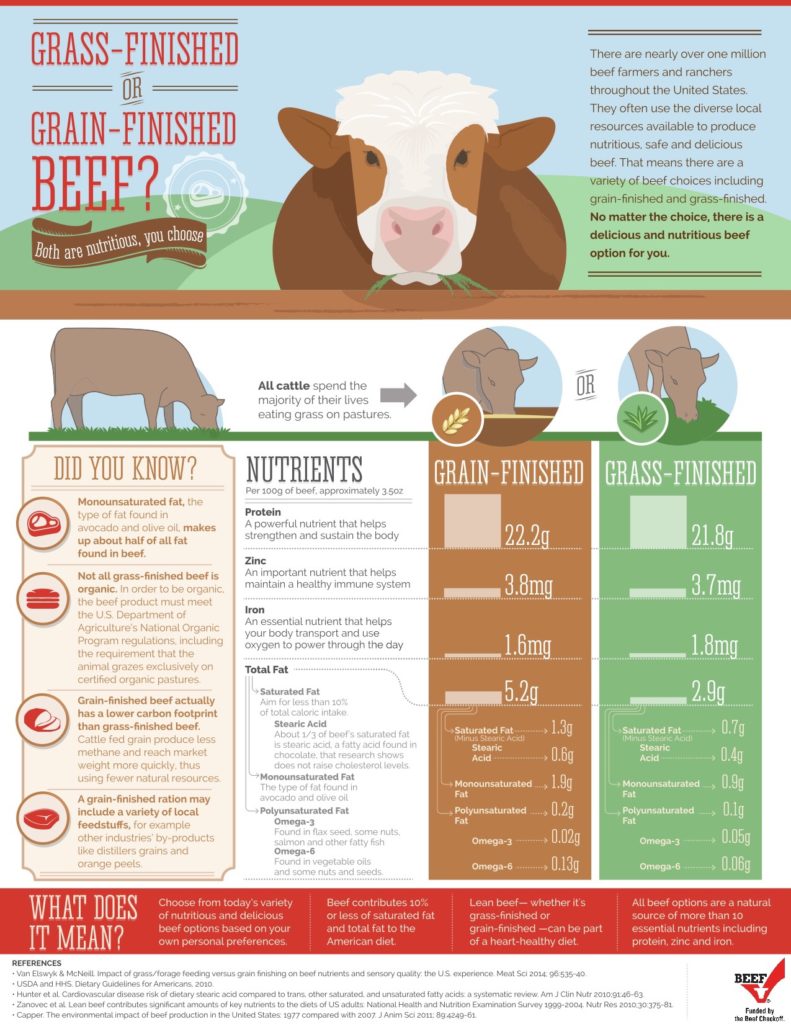Have you ever been confused about all the labels on foods at the grocery store? You are not alone. Frustrated by the endless marketing tactics employed by advertisers and big-chain grocery stores, I decided to do some research.
I don’t want to just tell you what I believe about the food truths I discovered. It’s not my place to tell you what to believe or what to do. But this series is being written because I do want to show you and explain to you WHY I believe what I consider to be some very important food truths that I have uncovered in my quest to become an informed consumer.
I told you about my background growing up on a farm and ranch in Part I, and how I have now moved from city-life for 12 years back to my husband’s family farm. In Part II I shared with you a few more key experiences that have shaped my beliefs.
I am convinced though, that even if I had not spent such a significant amount of my life on a farm and ranch, I would still feel the same way about the food we eat. As a mom and wife first, I care about the food we eat—and it’s safety and nutrition—because the food I raise and the food I buy at the store is the same food I feed my kids and my whole family!

Our 2 year old watching over the cattle after their evening meal of grain and hay.
I am so grateful, every single day, that we live in America, home of the most abundant, diverse, and safest food supply in the world. But this also means that we live in this land of constant bombardment of social media advertisements, and sneaky fear-based marketing tactics by supermarkets with hidden agendas.
Let’s pause for a second—I want to make sure it’s understood what I mean when I use the terms “fear-mongering” or “fear-based marketing.” Many retailers and self-proclaimed know-it-alls are guilty of it, not just Whole Foods-type grocery stores. Their whole business model is to use fear—they make certain labels or practices seem “safer” or healthier, in order to raise their prices.
An exact example of this—an actual conversation with one of my friends in regards to Whole Foods. She said, “I feel like it’s a big overpriced cult but if you don’t get your food for your family there you’re doing it wrong. So many of us want to eat healthier but cannot understand why we need to take out a second mortgage to do so!” In my opinion, this kind of food-shaming is deplorable and should be a crime.
Besides just not needing any more mom-guilt, the shaming over food choices based on certain labels becomes a big problem when people, thanks to these marketing tactics, decide that since they can’t afford to buy foods with certain labels, they stop buying and eating as many fruits and veggies and lean proteins as they and their family need for optimal health.
I believe that one of the most key factors in a healthy diet is getting in an appropriate amount of real, whole foods in as close to their natural state as possible—fruits, veggies, lean meats, whole grains, and healthy fats, regardless of whether they are fresh or frozen or canned, raised organically or conventionally, or have been genetically modified.
I have good news for you! You don’t have to break the bank to eat healthy. I’m going to share with you the main food truths I have discovered when considering what food to feed myself and my family. A hint: they are based on science, with budget and taste preference sprinkled in.
SCIENCE, and Food Labels
Before I jump in to my nerdy love of science, I want to tell you a few interesting facts about myself.
I’m a little unorthodox. I might seem to contradict myself even. For instance, I work in the medical field. Modern medicine is AMAZING. Yet I myself will go to great lengths to avoid any type of medical intervention—I have to be on my death bed before I will even take an ibuprofen. I gave birth to two babies without pain meds, and without epidurals, and I plan to do it again a third time in a few months. This is not because I don’t believe in medicine—trust me, if I were to need an emergency cesarean section, I would be DAMN thankful for that quick and effective epidural to numb me from belly down.
It’s just that I very strongly believe in the innate strength of the human body! And because I believe in the power of diet and lifestyle changes to have a measurable impact on health. Please note, I am NOT saying that food or other “holistic” methods can cure any type of disease. That’s a whole other topic!
So why do I believe in medicine, and in science? Well, it goes back somewhat to my college education, and my degree, and my experience working in healthcare. But the bottom line is that I believe in un-biased, peer-viewed research and review of large-scale studies that have been reproduced by proper research methods.
I cannot for the life of me wrap my head around letting bogus websites, ill-informed celebrities or self-proclaimed experts dictate the care of my family. I don’t believe in conspiracy theories. I don’t believe the government is “out to get us,” or hiding anything from us. I choose to believe highly educated scientists.
As a mom shopping for my family, I like to know what is in the food I buy. I like to know how and sometimes even where it was produced. I feed my kids the same food that I eat. I am that annoying person at the store standing in front of the shelf reading the food label of Every. Thing. I. Buy. Because labels are tricky! I have become a pretty good label-reader I would like to think—sugar has about 38 different names or forms and I can spot most of them. (I completely made up that number, but you get the gist).
I’m not saying you have to take up this level of obsessiveness—in fact, I’m here to convince you that you absolutely can relax when grocery shopping and you can feel confident about your choices when you are feeding your family!
Moms, don’t we deal with enough mom-guilt without having to let large-chain grocery stores or social or other advertising media add to the guilt by making us feel ashamed of our food choices? But this is precisely what is happening. Marketing preys on our mom-guilt. But without further ad-o, here are the misconceptions that I hear and the food truths I have uncovered.
The “Health Food Store Halo”
It usually sounds something like this: “I bought these animal crackers at the health food store so they must be healthy.”
Sorry, the food truth is that health food stores sell just as much “less-healthy” food as other grocery stores. A processed “cookie” or cracker is still filled with sugar and other unhealthy ingredients, regardless of the store it came from.
The “Organic” Label
Have you ever had this thought? “This juice box has the “certified organic” label so it is healthier than the non-organic juice box. Plus, I think that means it’s safer for us to eat because organic farming practices use so many less chemicals.”
Please. Put down the juice box. First food truth here–just because something has an organic label does not make it healthier than it’s conventional alternative. Especially juice. You still have to read the label to see how much sugar is in it.
Second very important food truth: SCIENCE has shown no nutritional differences (or taste differences) in say, an organically grown apple versus a conventionally grown apple.
Sure, you could probably find some sources that say that the nutritional value differs slightly, but in the grand scheme of your overall diet, is a minuscule difference in the amount of vitamin “x” or antioxidant “y” going to make a difference? Also, check to see who funded said study and if it has been reproduced—the organic industry has DEEP pockets.
Another interesting fact: did you know that the “certified organic” label from the USDA is simply a marketing program? The label has to do with the process of how a food was grown or raised. It has nothing to do with promising that good animal health was maintained, or that the animals were treated humanely, AND it has nothing to do with food safety. In fact, it says right on the USDA’s National Organic Program (NOP) website that their “regulations do not address food safety or nutrition.”
Don’t be misled—both organic AND conventional farming use pesticides, but rest-assured BOTH organic and conventional foods are monitored by the USDA’s Pesticide Data Program (PDP) for safety when it comes the levels of pesticide residues.

My farmer and our son filling the drills with wheat to get ready for planting.
The Genetically Modified Foods Debate
I have heard this pseudo-argument way too many times: “This can of artichokes has the “non-GMO verified” label on it so I know it’s healthier and safer than the can beside it without genetically modified organisms.” First food truth bomb–there are NO genetically modified artichokes!!! There are only eight (soon to be nine) genetically modified foods. What a terrible misrepresentation of a product, in my opinion, to label a genetically modified food that doesn’t even EXIST as GMO-free! I also feel kind of offended, as a consumer, that advertisers think I am so uninformed.
I hope it’s helpful to know that genetic modification is one of many PROCESSES of plant breeding. It’s NOT an ingredient. It’s not something that is “injected” into a food. Genetic modification has many advantages even!
Secondly, SCIENCE has shown, over and over and over again that there is no difference, in taste, or nutritional value, or safety, of genetically modified foods. If you still are unsure, check out a scientist debunking many of the GMO myths that cause all of this undue uncertainty.
Grass-Finished vs. Grain-Finished Beef
“This beef was grass-fed, and I have heard about how much healthier it is than grain-fed beef.”
Sorry again. Oh you guys—this one gets me! This misconception comes from the fact that grass-fed beef does indeed contain more omega-3 fatty acids. Before you say, “I told you so,” keep reading. The food truth–the kicker–is that it’s an insignificant difference: a serving of grass-fed beef provides 50 milligrams of omega-3 fatty-acids, while grain-fed contains 20 milligrams.

Source: http://www.beefresearch.org/CMDocs/BeefResearch/GrassGrainFactSheet.pdf
So, lean beef, while it’s a tasty source of TEN essential vitamins and nutrients, like protein, zinc, iron, B Vitamins, etc, it’s not a good source of omega-3 fatty acids. No one eats beef for the fatty-acids right? We eat it because it’s nutrient-dense and delicious!
When we are looking for sources of omega-3s, we eat foods like salmon for example—that are ACTUALLY a quality source of omega-3s. Salmon contains as many as 1500 milligrams per serving!
Again, if grass-finished beef is labeled as “organic,” the same applies here as mentioned earlier—this is a marketing label. It has to do with how the cattle were raised and what they were fed, whether or not they were ever given a growth hormone to help them put on lean muscle (think: tasty steak!) or given an antibiotic when they were sick (and please note the truth here that both the hormones and the antibiotics, if used, are no longer in the animal’s system when it is arrives to you in your grocery store as a package of beef).
The grass-fed or organic label does not assure you that the animal was treated humanely. All ranchers and every person who handles the animal, from ranch to plate, have worked diligently to develop and improve animal care and handling standards. We also have programs like the Beef Quality Assurance Program that addresses these topics. If you have been spending double to buy grass-finished beef because you were led to believe that the label means the cattle were treated better, you have been duped.
Another truth: If it is the environmentally friendly aspect that gets you—multiple studies show that grain-finished beef leaves a smaller carbon footprint (due to less methane gas production). And here. You’re welcome!
So my final food truth here is that since both grass-finished and grain-finished cattle spend most of their lives in green pastures and are a nutritious choice for a lean protein, pick according to your taste preference, and budget.
I am not against organic farming, or grass-finished beef. They are personal choices of each producer, and often have more to do with the area you live in and your climate and landscape. Again, it’s another perk to living in the good old U.S. of A. We have SO many choices. Each method actually comes with a host of pros and cons. I just simply hate the shaming that goes on to make you feel like you are giving yourself or your family “less than healthy” when you make choices based on knowledge and facts instead of fear-based marketing.
WHAT ABOUT FOOD SAFETY?
Are you wondering why I haven’t even touched on food safety—I mean, it almost was the title of today’s blog! But this is a pretty simple question to answer.
I’m sorry to be redundant, but we, my friends, live in America, land of the most abundant, easily accessible food sources in the world. Not only that, but the SAFEST food in the world. We have multiple, strict food inspection agencies and inspection policies. I don’t know about you, but when I shop at the store, or eat at a restaurant, I don’t even think twice about “is this water safe to drink?” or, “how do I know this food is safe to buy?” And man am I grateful I don’t have to spend time or energy worrying about it!
Regardless of the labels on food, or their source, or how they were grown or raised, the United States Department of Agriculture (USDA), their Food Safety and Inspection Services (FSIS), and the Environmental Protection Agency (EPA), along with individual state agencies are just a few of the regulating bodies that work diligently to keep our food supply safe. This even includes all foods that we import. It is actually checked and tested multiple times!
And alas, much of the food safety issue has to be practiced at home, by each individual consumer. The majority of foodborne illnesses can be prevented by a few simple steps during shopping and preparing the food. Check out this great short run-down on how to protect you and your family from food borne illness.
In Conclusion
I hope the food truths I have shared with you help you feel confident in your choices the next time you are at the store shopping. I also hope you feel relieved that our precious food-budget-dollars will now stretch much further when we know we can put aside the fear-based marketing and remember the food truths.
Eating an abundant amount of fruits and veggies, whole grains, and lean meats, along with healthy fats is much more important than stressing out over the minuscule or non-existent nutritional differences in foods with different labels.
I also hope you feel confident in the safety of our food supply. We are so blessed!








Thank you for putting such a wealth of information into one article. Super helpful! I liked your storytelling style as well.
Thank you Traci!